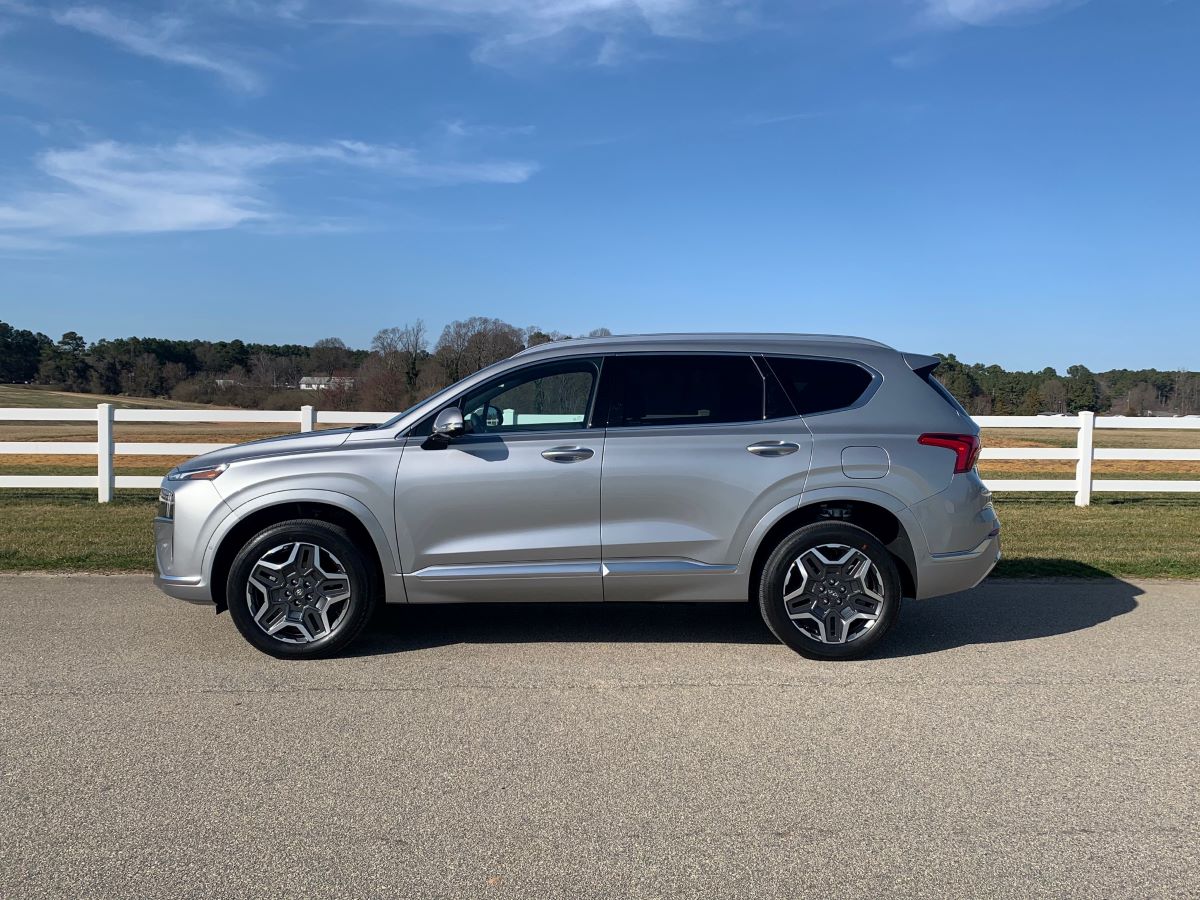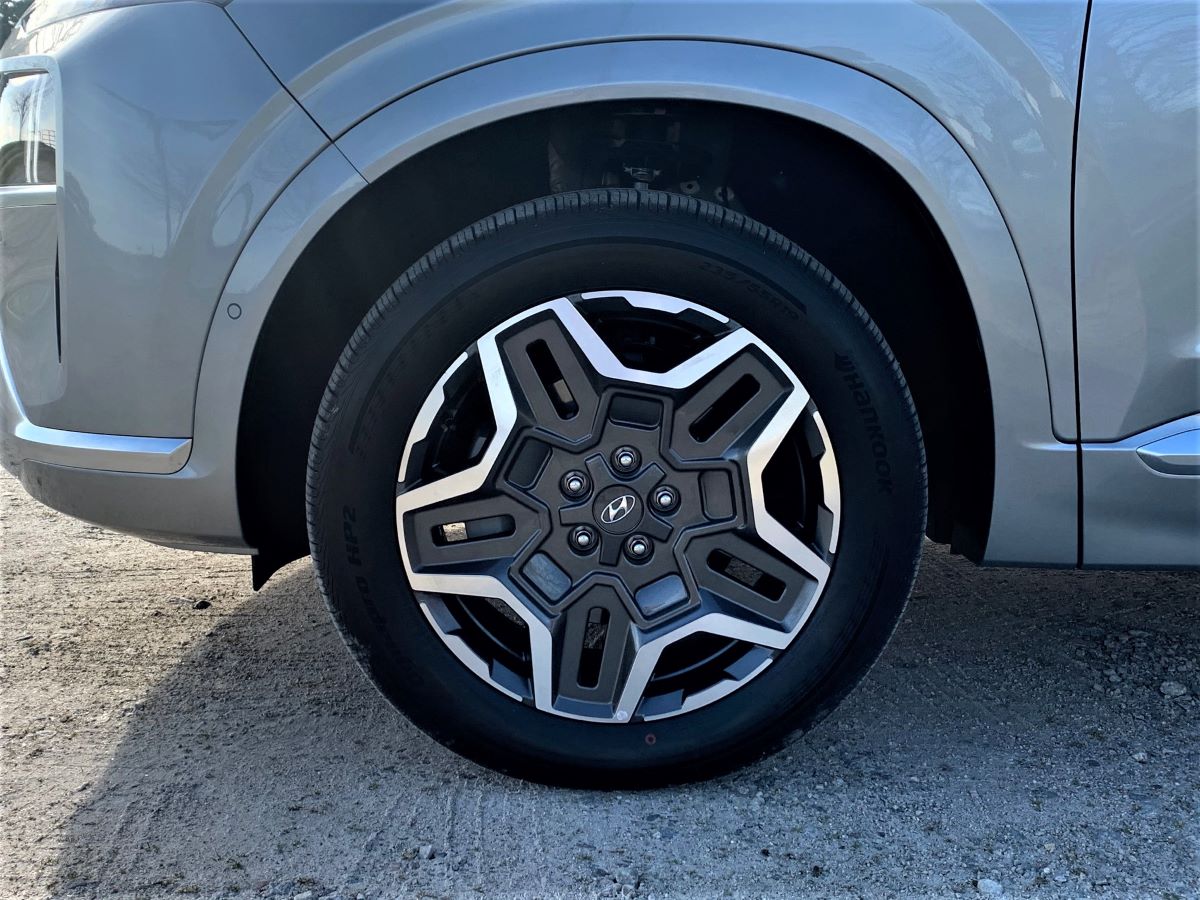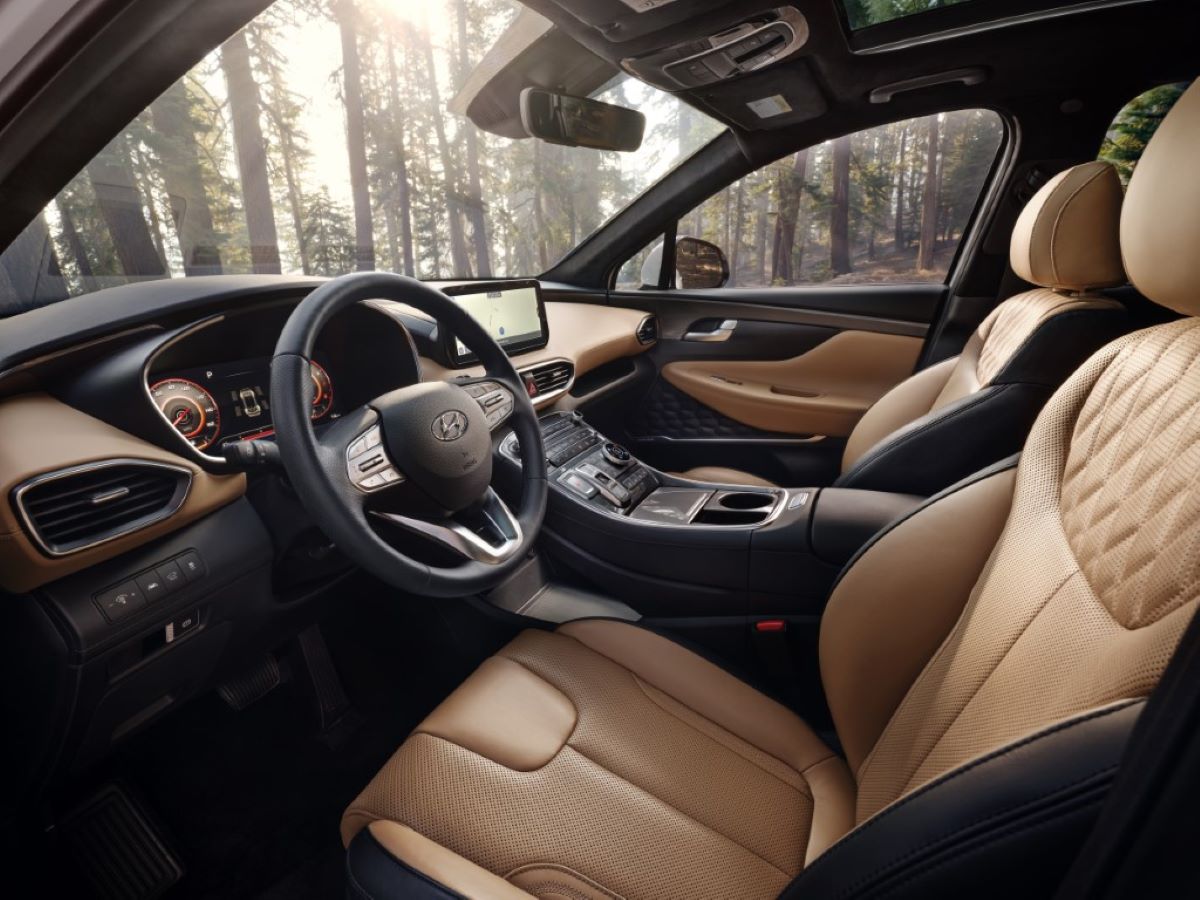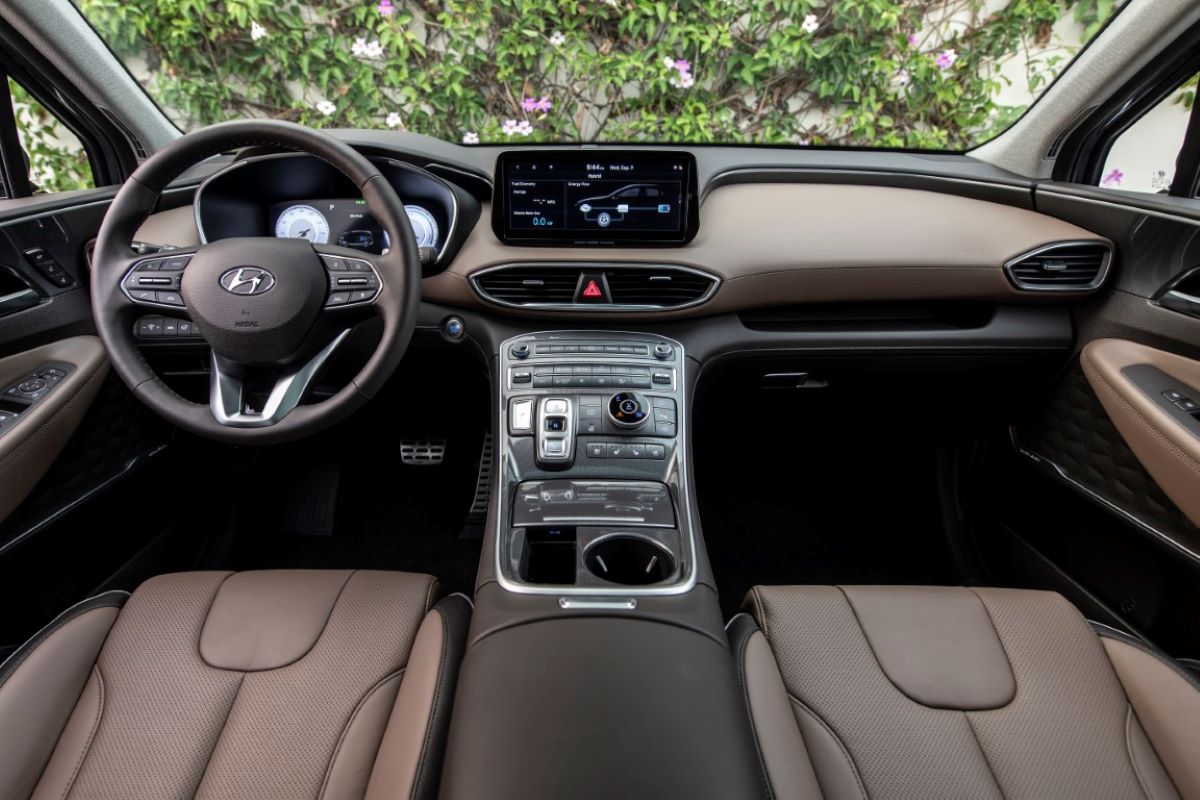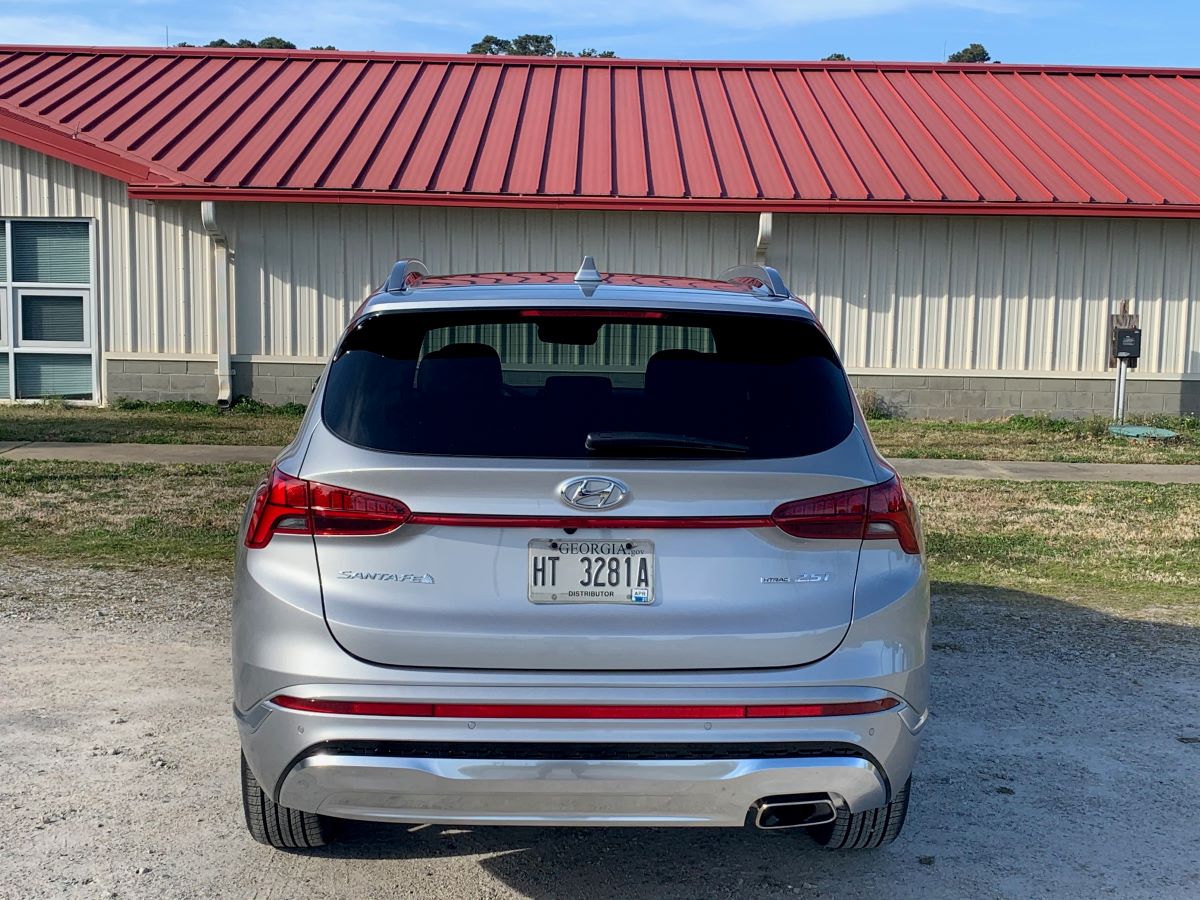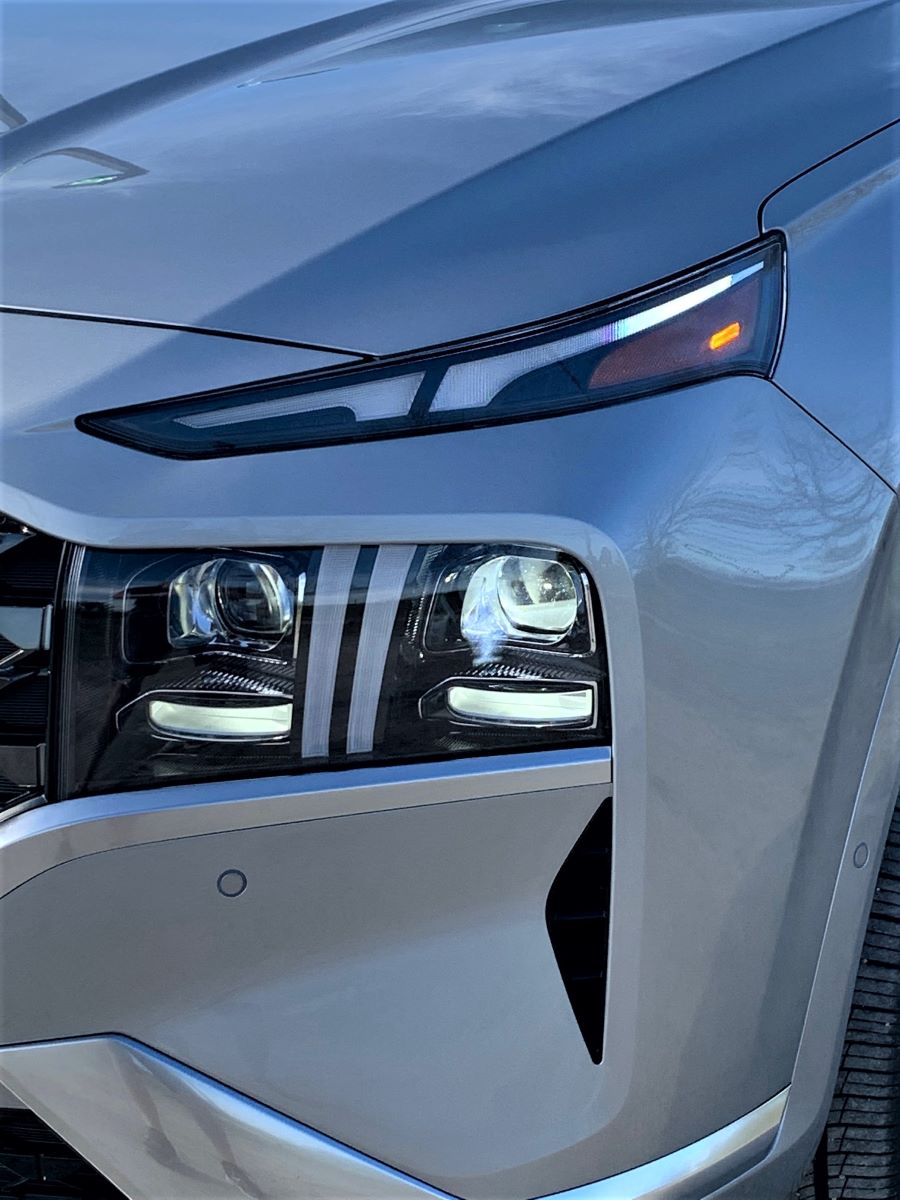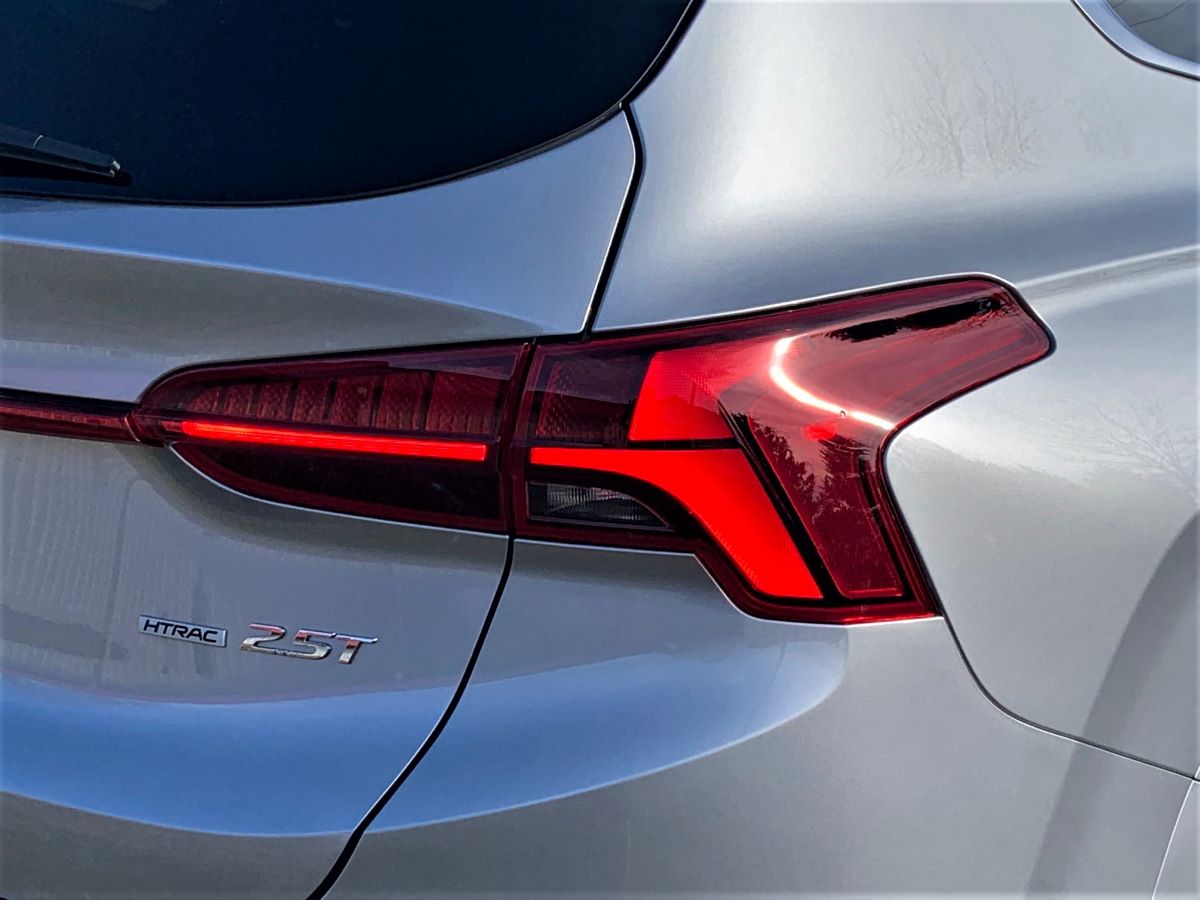Refreshed Santa Fe line gains a pair of hybrids.
Now in its third year, the fourth-generation Hyundai Santa Fe is thoroughly refreshed. With its many changes, Hyundai’s midsize crossover utility vehicle is better positioned to battle it out in a growing segment. There are five trims for the choosing (SE, SEL, Limited, and two Calligraphy models).
For the consumer wanting something different than the family sedan, such as the Hyundai Sonata, the Santa Fe is a strong substitute as it brings the utility customers want, packaged in a family-friendly environment.
We think it is one of the strongest models in the segment as it brings updated styling, lots of creature features, and new powertrain choices to the forefront.
2021 Hyundai Santa Fe Calligraphy Review
Hyundai prices the 2021 Santa Fe from $28,035 to $43,485, plus a $1,185 destination charge. The Santa Fe seats five and comes with standard front-wheel drive and available all-wheel drive, although the Calligraphy editions are all-wheel-drive-only.
Lots of new features rolled out this year, including the range-topping Calligraphy edition, which was our test model. Changes to exterior lighting, new engine choices, additional safety features, a refreshed interior, and an updated tech inventory round out the changes in this aggressive refresh.
Exterior
There is a lot going on with the Santa Fe’s exterior. The front fascia has a more aggressive look with its honeycomb grille, narrow but long LED lights, dimpled cutouts, and gaping lower intake. It reminds us of a shark somewhat, although a growling bear is another visage we see.
The latest model features a more detailed hood, strong shoulders, generous amounts of profile detailing, and a raised beltline that kicks up at the rear. From the back, the look is tamer, yet elegant.
Indeed, the large tail lamps are connected with a light bar. A similar set of reflectors are found across the rear bumper. A spoiler tops the liftgate, itself marked with wraparound glass.
Every trim comes with LED headlights, LED accent lights, and LED daytime running lights. Side mirror approach lamps (puddle lamps) are reserved for the Limited and Calligraphy trims, yet optional on the SEL.
Automatic headlights with high beam assist are included. LED taillights are reserved for the Limited and Calligraphy models, but are available in a package upgrade with the SEL.
Features such as heated side mirrors are found in the SEL trim. A set of power-folding side mirrors comes with the Limited and Calligraphy trims. Items such as roof rails are included beginning with the SEL trim. All trims come with a roof-mounted shark-fin antenna and a 7-pin trailer wire connection.
Alloy wheels rule the day with the Santa Fe. You’ll find 18- 19- and 20-inch wheels across the trim line with 17-inch wheels reserved exclusively for the hybrid.
Interior
Apart from a midsize sedan, where might you begin your search for a crossover with comfortable room for five? That would be in the Santa Fe’s segment as the seats offer admirable comfort and generous support. We can say the same for the rear seat as it offers enough space for three adults, even if two is your preference.
Behind the rear seat is 36.4 cubic feet of storage space. Fold the rear seat down and 72.1 cubic feet becomes available. Compare these numbers to the Chevrolet Blazer (30.5/64.2 cubic feet), Nissan Murano 32.1/67.0 cubic feet), and the Volkswagen Atlas Sport (40.3/77.8 cubic feet), and it is evident that the Santa Fe holds its own.
The Santa Fe’s standard tow rating is 1,650 pounds, but rises to 2,000 or 3,500 pounds, when properly equipped. In this department, it is on equal footing with the Ford Edge, but well below the Grand Cherokee’s 7,200-pound tow capacity, which benefits from V8 power on the upper end.
Hyundai chose a clean and contemporary look for the Santa Fe and one that’s fairly straightforward. We like the layered dashboard with contrasting colors dividing the two top sections, with the top color also evident at the base of the dashboard, the center console, and along the doors.
The center console is defined by the touchscreen display situated on the dashboard with HVAC vents beneath. Further down are HVAC and audio system controls with the transmission panel beneath that.
With the Santa Fe, Hyundai utilizes switches to control the transmission – it takes some getting used to but it does free up clutter around the steering column. Cupholders and an available device charging port finish the console’s layout.
Hyundai fashions the Santa Fe’s seats in stain-resistant cloth on the SE and SEL trims, with leather in the Limited (available with the SEL), and high-end hides in the Calligraphy. The front seats come with manual adjustment and lumbar support but include power support as you work your way through the trim range. Heated and ventilated seats are available.
The second-row 60/40 split fold-flat seats recline and include adjustable head restraints. Heated outboard rear seats are exclusive to the Limited and Calligraphy trims.
All trims come with full power accessories, air conditioning or zoned climate control, a tilt-and-telescoping steering column, and ample storage compartments. Rear side-window sunshades are included with the Limited and Calligraphy but are optional with the SEL.
Tech
Hyundai equips the Santa Fe with a standard 8-inch color display, an audio package, two USB ports, and wireless Apple CarPlay and Android Auto smartphone integration. We’re seeing more wireless choices these days and that’s great if you want to do without the cord. Move up to the SEL trim and satellite radio, HD Radio, and connected car services are included.
Beginning with the Limited trim, Hyundai brings in a 10.25-inch touch-screen display with navigation, wireless device charging, a surround-view monitor, and a 630-watt Harman Kardon audio system with 12 speakers. This sound system is a treat as it floods the cabin with precision.
Our Calligraphy model included a 12.3-inch digital cluster, a feature offered in other Hyundai models, including the compact Elantra sedan. It seems almost out of place here, but in a good way – you don’t need to upgrade to a luxury brand to enjoy the crisp digital dials on display. Other available features include a 115-volt power outlet with the Limited and Calligraphy trims.
Safety
We like our driver-assist safety equipment as these tech tools help keep us safe. They’re widely available on the 2021 Santa Fe, but most features are included beginning with the SEL trim. That said, every trim comes with adaptive cruise control with stop and go, forward collision warning, lane-keeping assist, and driver attention warning.
Other features, such as blind-spot collision-avoidance assist, rear cross-traffic collision-avoidance assist, parking distance warning (forward and reverse), and remote smart parking assist are included beginning with the SEL or Limited trims. In all, Hyundai matches or betters the competition in safety features.
Performance
Hyundai overhauled the Santa Fe’s powertrains for 2021, replacing the 2.4-liter four-cylinder engine and 2.0-liter turbocharged four with a 2.5-liter naturally aspirated and 1.6-liter turbocharged engines.
Further, Hyundai added a turbo to the 2.5-liter engine for the Calligraphy range. As a result, the performance numbers are up this year and that’s an important consideration for anyone who emphasizes power.
The second of the two engines is perhaps the most intriguing one as it comprises one part of the Santa Fe’s new hybrid drivetrain. Along with a six-speed automatic transmission, two electric motors, and a lithium-ion polymer battery, the system drives the first-ever Santa Fe Hybrid.
A plug-in version rolls out later this year and will supply the usual electric-only range. We won’t comment on the hybrids at this time, but with an average fuel economy of 34 mpg and ample power to boot, these models should make a difference for Hyundai. Also, the PHEV version qualifies for federal and state tax incentives.
Moving to a 2.5-liter four-cylinder engine gives the standard model a slight boost in power. Like the turbocharged version of this same engine, power routes to the front or all four wheels utilizing an 8-speed automatic transmission.
Our test model had the turbocharged version. It makes 277 horsepower and 311 pound-feet of torque. This is a vast improvement over the previous 2.0-liter turbo engine making 235 horsepower. Although the previous engine was a gamer, this one allows the Santa Fe to achieve range-topping performance.
The engine supplies excellent step-off acceleration and robust passing power. The turbo spools quickly and the transmission moves cleanly and rapidly. With this engine, Hyundai chose an 8-speed dual-clutch transmission to send power to the wheels at a rapid clip.
This transmission is also “wet” and that means it comes packed with its own fluid. So-called “dry” transmissions do not share that benefit and have a greater risk of slipping and wear.
You may recall Hyundai’s earlier problems with a dry 7-speed dual-clutch transmission and the costly recalls undertaken to fix these problems. Hyundai went back to the drawing board and made the necessary improvements and added one gear for good measure.
We found the Santa Fe’s electric power steering along with its front strut and rear multi-link suspension to our liking. The steering inputs react fast, if not unremarkable, but what you’d expect in this class. Most bumps are swallowed with ease, though you shouldn’t be surprised when crossing potholes and some vibration moves through the vehicle.
We think most customers will be satisfied with the standard engine as it should deliver power commiserate with its size. You’ll also avoid paying many thousands of dollars more to upgrade to the Limited trim.
Competitive Set
The midsize two-row SUV segment is growing. Previously, it was overlooked as manufacturers concentrated on three-row versions.
Among the Santa Fe’s competitors are the Nissan Murano, Ford Edge, Honda Passport, Toyota Venza, Buick Envision, Jeep Cherokee, Chevrolet Blazer, and the Volkswagen Atlas Sport. Most models come with four-cylinder engines, naturally aspirated and turbocharged, with standard front-wheel drive and available all-wheel drive.
Our Recommendation
As a rule, we rarely recommend the base trim for any model. There are exceptions, but we aren’t making one with the 2021 Santa Fe.
We think starting with the SEL trim is ideal for most as it brings in additional safety features, tech items, and design improvements. Opt for the Premium Package ($3,950) bridges the near-$10,000 gap between the second and third trims.
This package builds on the Convenience Package ($1,800; power liftgate, 12.3-inch digital cluster, puddle lamps, dual-zone climate control, and manual rear sunshades), bringing in leather seating surfaces, a power passenger seat, the Harman Kardon audio system, panoramic sunroof, LED interior lights, and a 10.25-inch navigation display.
Your final cost here is $35,585 for a well-equipped model. Opt for all-wheel drive and you’ll add $1,700 to your total. In all, as equipped, the Santa Fe brings with it a long list of features, an excellent warranty, and a competitive price.
|
See Also – Midsize Performance Master: 2021 Hyundai Sonata N-Line
Photos copyright Auto Trends Magazine. All rights reserved.
- 2024 Mazda CX-50: A Compact SUV with Premium Aspirations - Apr 15, 2024
- 2024 Ford Mustang (Iconic Pony Car Evolves) - Apr 4, 2024
- 2024 Ford Maverick (Looks Like a Truck, Drives Like a Car) - Mar 28, 2024


